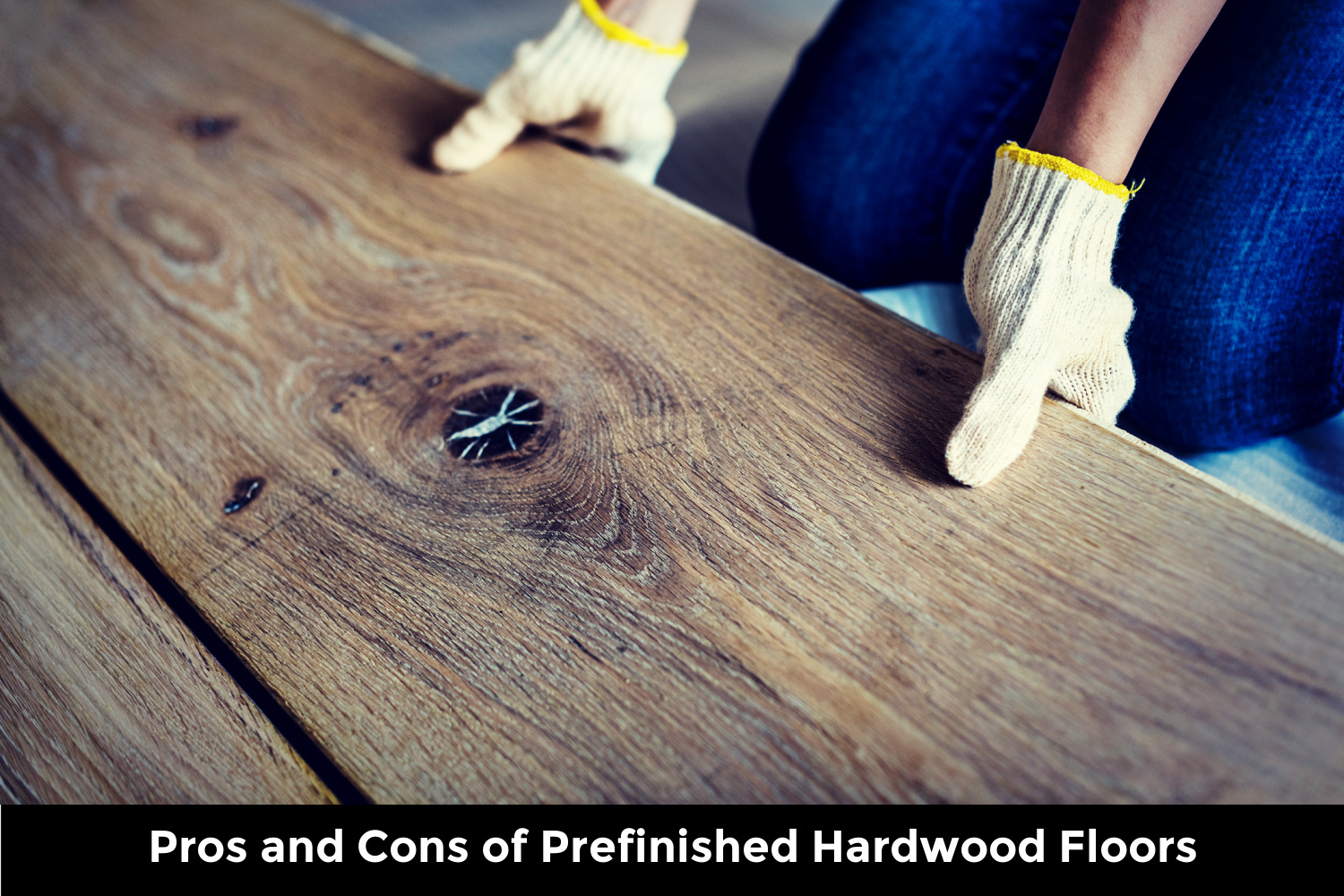Should You Use Prefinished Hardwood Flooring?
Hardwood flooring is available in prefinished and unfinished options. Prefinished hardwood has a factory-applied finish and is ready for installation upon delivery.
Unfinished hardwood, however, requires on-site finishing, including sanding, staining, and adding a protective top coat.
When to Choose Prefinished Hardwood Flooring
Prefinished floor removes the need to install and then stain your hardwoods. Here are the three main reasons to opt for prefinished wood flooring.
- Time Constraints: Prefinished hardwood flooring is best for tight schedules. It saves you the waiting period as it doesn’t need on-site finishing.
- Minimal Disruption: Installing prefinished floors doesn’t necessitate temporary relocation. The process also emits less dust, odors, and fumes, making it ideal for allergic homeowners. Finishing hardwoods is a chemical-laden process that requires evacuation for several days.
- Warranties: Manufacturers often offer warranties on prefinished hardwood flooring. It gives homeowners peace of mind and assurance of the product’s durability.
Prefinished Hardwood vs. Engineered Hardwood Flooring
Engineered hardwood, a lab-created timber, consists of wood layers bonded under heat and pressure. Its top layer features natural hardwood veneer, while the core layers comprise plywood or high-density fiberboard (HDF).
Prefinished wood undergoes factory surface treatment before installation. Unlike engineered hardwood, it comprises a single layer of solid wood across the plank.
With proper maintenance, solid prefinished hardwood offers greater durability and longevity. But, it’s more sensitive to moisture and temperature changes, causing expansion and contraction.
Engineered hardwood boasts enhanced stability and resistance. Its layered construction reduces warping and cupping, ideal for high humidity or below-grade settings. The downside is that since the top layer is only a thin piece of wood, it’s not ideal for refinishing and therefore doesn’t last as long as solid hardwood planks.
Prefinished Hardwood Finishes
Prefinished hardwood flooring offers an array of finishes to boost wood’s appearance and durability. Here are the popular prefinished hardwood finishes:
1. Polyurethane
Polyurethane finishes offer a transparent, glossy, or semi-glossy protective layer that amplifies the wood’s beauty. These finishes come in various sheen levels, ranging from high gloss to satin.
2. Aluminum Oxide
Aluminum oxide finishes incorporate minuscule aluminum oxide particles within the wood’s uppermost layer. This type of finish has exceptional resistance against scratches and dents. It’s an ideal choice for areas with heavy foot traffic.
3. Oil-Based Finishes
Oil-based finishes add a natural aesthetic to hardwood floors. They penetrate the wood, accentuating its grain and color while providing a protective layer. Regular maintenance, such as the periodic reapplication of oil or wax, maintains the floor’s optimal appearance.
4. Water-Based Finishes
Water-based finishes are popular due to low VOC (volatile organic compounds) content and fast drying time. They provide a transparent protective layer that enhances the wood’s natural color without altering its appearance. Water-based finishes are available in various sheen levels, from matte to high gloss.
5. UV-Cured Finishes
UV-cured finishes are applied to prefinished hardwood flooring and cured using ultraviolet light. This process provides excellent durability, fast drying time, and minimal VOC emissions.
Top Considerations Before Choosing Prefinished Hardwood Flooring
Aesthetics and Design Flexibility
Prefinished hardwood flooring provides an array of colors, finishes, and textures. It’s made in a controlled factory environment to achieve a uniform appearance.
Opting for unfinished hardwood flooring enables you to create a personalized and distinct look. On-site finishing offers more control over the wood’s stain color, sheen level, and appearance.
Installation Convenience
Installing prefinished hardwood flooring is easier as it arrives sanded and sealed. Factory finishing saves time, reduces mess, and eliminates odors associated with finishing procedures resulting in swift installation and immediate use of the space.
Unfinished hardwood flooring necessitates on-site finishing. After installation, the hardwood must undergo sanding, staining, and finishing of planks. This intricate and time-consuming process releases fumes and dust. The finishes take several days to dry. Homeowners must leave their houses during this process.
Repair Convenience
Prefinished hardwood flooring offers more convenience in repairs. You can replace damaged sections without affecting the entire floor.
Repairing unfinished hardwood flooring can be more laborious and time-consuming. Since the finishing process occurs on-site, repairs might involve sanding and refinishing the damaged area. Matching the exact color and finish during the repair can be challenging. It may even require refinishing the entire room to maintain a consistent appearance.
Cost Comparison with Unfinished Hardwood
Prefinished hardwood is pricier than unfinished hardwood due to factory processing. However, prefinished hardwood doesn’t require on-site finishing expenses.
It’s essential to account for the added time and labor during installation, including sanding and finishing. They extend the project’s timeline and cost. Prefinished hardwood is ready for immediate installation, saving both time and labor.


